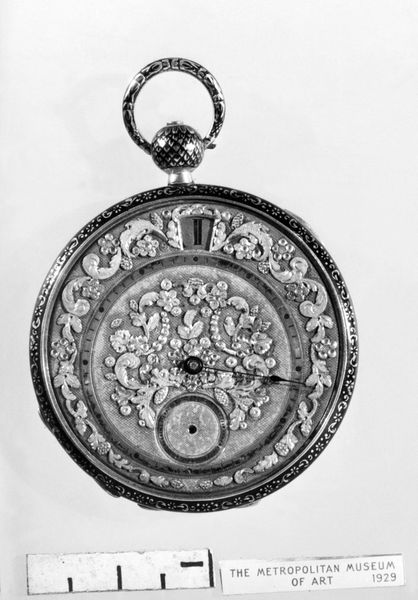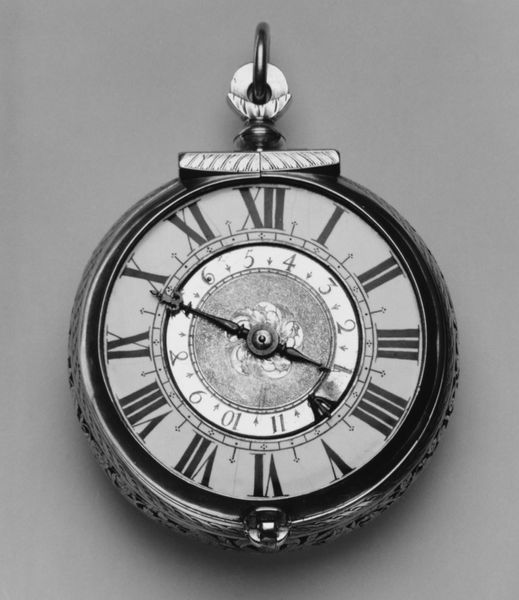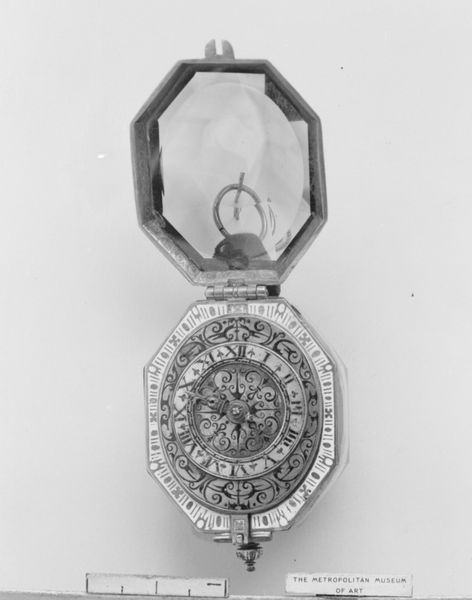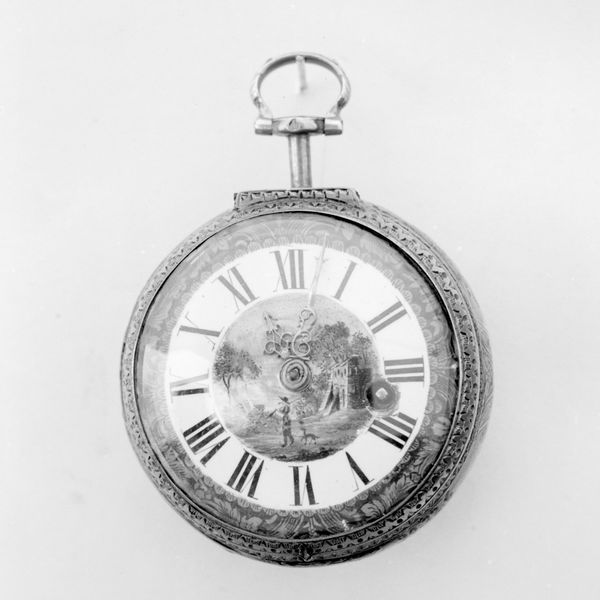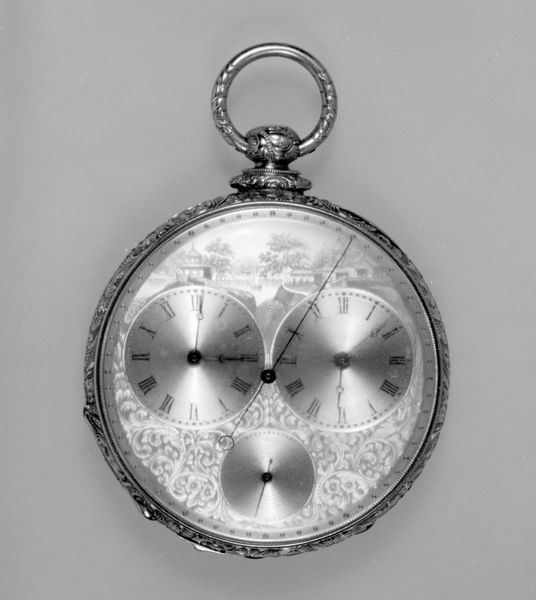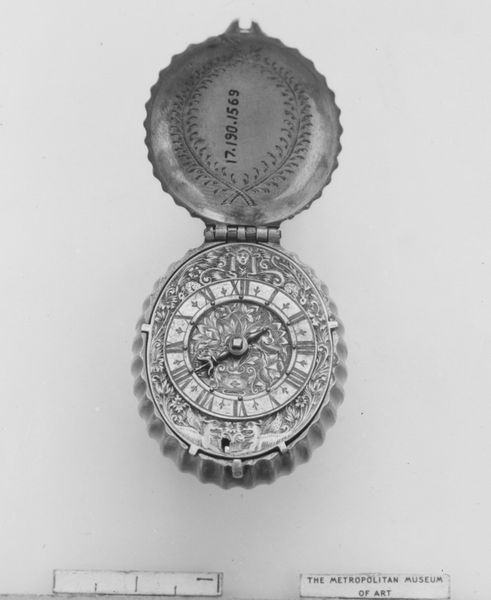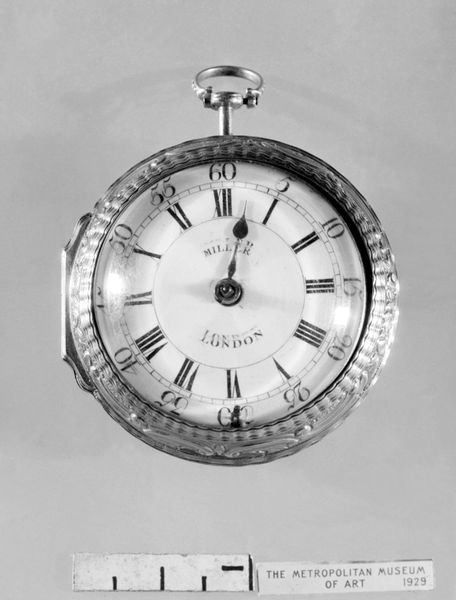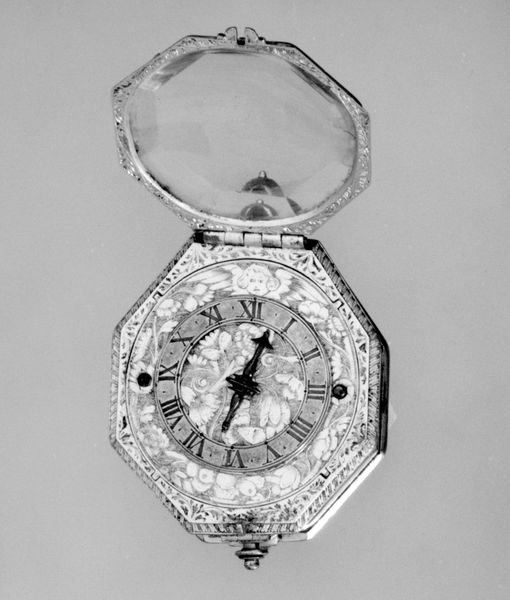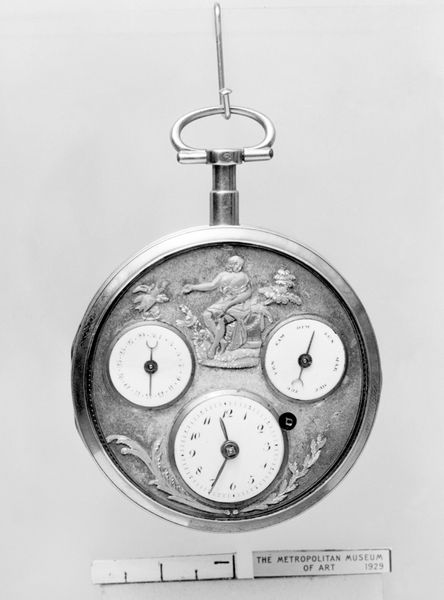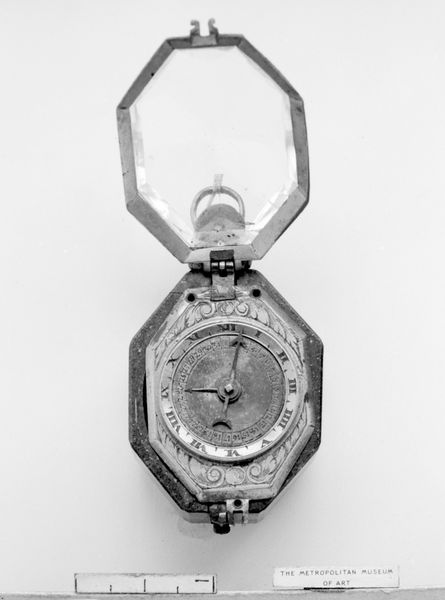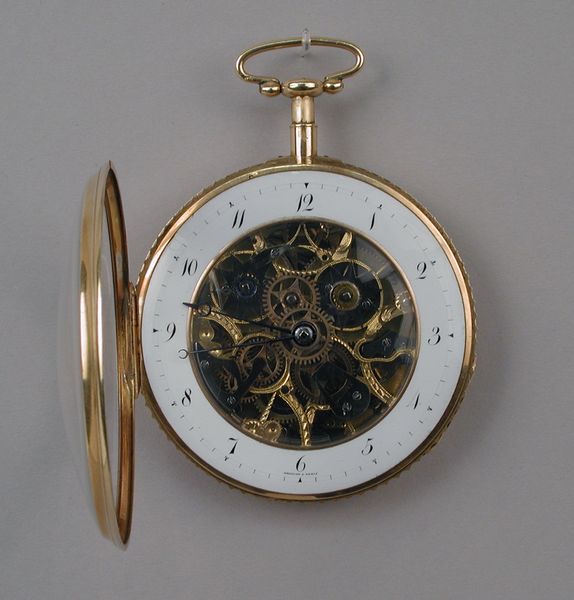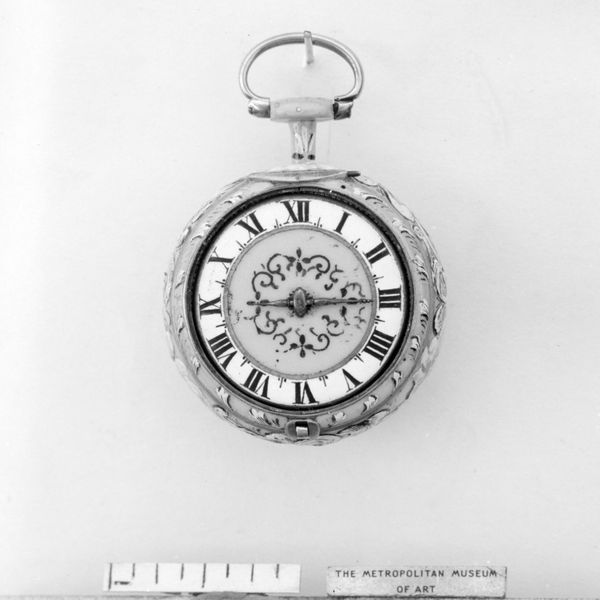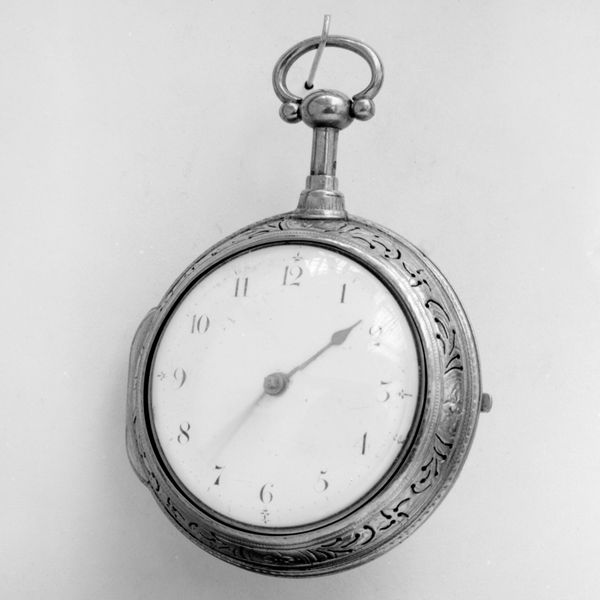
metal, sculpture, engraving
#
baroque
#
metal
#
sculpture
#
decorative-art
#
engraving
Dimensions: Diameter: 2 in. (5.1 cm)
Copyright: Public Domain
Curator: This stunning object is a watch crafted by Abraham Pattey between 1675 and 1685. It's an exquisite example of late Baroque decorative art. You can currently find it on display at the Metropolitan Museum of Art. Editor: The level of detail is simply astonishing! The engraving creates an almost dizzying effect. There's something almost unsettling in the obsessive decoration around something used to measure time. Curator: The Baroque was often a performance of power and status, so a watch wasn’t simply a practical object. Consider the social implications. The intricate design displays the owner’s wealth and access to skilled craftsmanship, especially when few had reliable means to measure the day. It also signals their self-control. Editor: Right. I see how this relates to larger socio-cultural trends in that time. What's fascinating is the way it personalizes and aestheticizes time, framing it as a luxury rather than just an inevitable constraint. This piece almost transforms it into a status symbol. It even has depictions of the lunar cycle along the outer ring. Curator: Exactly. There's an intersection of art, science, and social hierarchy right here. We see representations of cherubs, decorative flowers. This blends religious motifs with more secular signs of wealth. Note that there are Roman numerals and various inscriptions. Editor: I'm struck by the thought of carrying something this elaborate. We can easily read this watch as both a celebration and indictment of control; perhaps time isn't just "money," but an accessory in a world rapidly obsessed with schedules. Its display would make me question the time-keeping institutions surrounding us today and who they benefit. Curator: Absolutely, the watch reflects the societal emphasis on control. The more deeply we consider art as a manifestation of culture, the more critical lenses can offer insights, beyond its beauty and materials. Editor: Indeed. Objects like this remind us to question who benefits and who gets left behind, prompting reflections beyond aesthetics.
Comments
No comments
Be the first to comment and join the conversation on the ultimate creative platform.
